NHS Consent Form PDFs
This page describes the content and structure of the various UK NHS consent summary PDFs generated in Concentric.
The majority of the clinician and patient interaction happens within Concentric, but for some staff groups, for example, ward nurses, ODPs (Operating Department Practitioners), scrub nurses etc., it is the output PDF that is the crucial document to review. This is usually viewed in the healthcare organisation’s EHR (Electronic Health Record) but is also available in Concentric.
These PDFs are shared with patients as a formal record, alongside their Concentric information (which will include lay descriptions of terms and discussion of elements not on the consent form itself, such as indications for treatment and alternative options).
Consent form types
Three different types of consent summary PDFs can be generated for a patient:
- Consent form 1: patient agreement to investigation or treatment (i.e. an adult patient with the capacity to consent). Example PDF here.
- Consent form 2: parental (or person with parental responsibility) agreement to investigation or treatment for a child or young person. Example PDF here.
- Consent form 4 / Treatment in best interest decision: for an adult who lacks the capacity to consent to investigation or treatment. Example PDF here.
For each type, the key information, including patient demographics, treatment name (including side if applicable), and the episode’s status (if consent has been confirmed, revoked etc.), is shown prominently on the first page.
The information included mirrors the requirements from the Department of Health and Social Care’s reference guide to consent form examination or treatment (second edition).
Consent form 1
Here is an example first page from a PDF for a consent episode. Where a Concentric logo is shown, this will usually be replaced by your organisation logo.
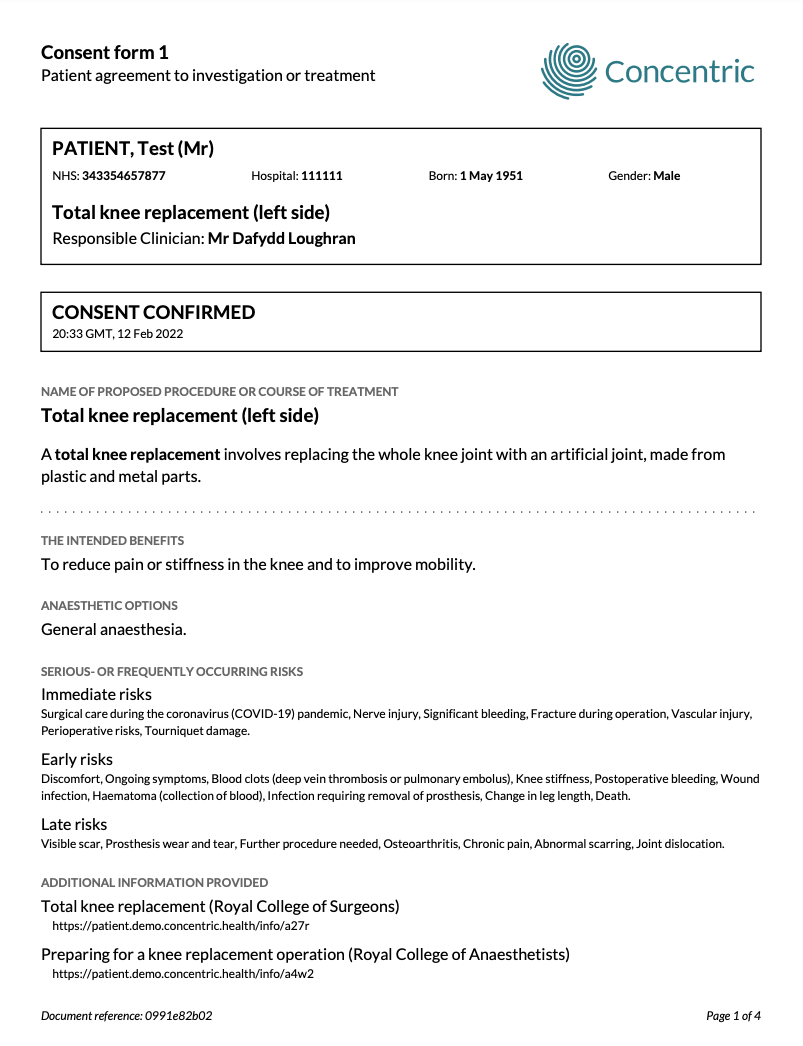
See a complete example including clinician and patient statements, additional consents, electronic signature, and confirmation of consent documentation here.
Consent form 2
In a Consent Form 2 scenario, an adult with parental responsibility is the one documenting their consent with a signature. There is an option for the child to add their signature should they wish.
As well as the document title stating that it’s a Consent Form 2, the consent statements are changed to reflect that consent is being given on behalf of the child:
Full details and a demonstration video of the consent form 2 workflow is available here.

The parent or guardian’s signature is documented:
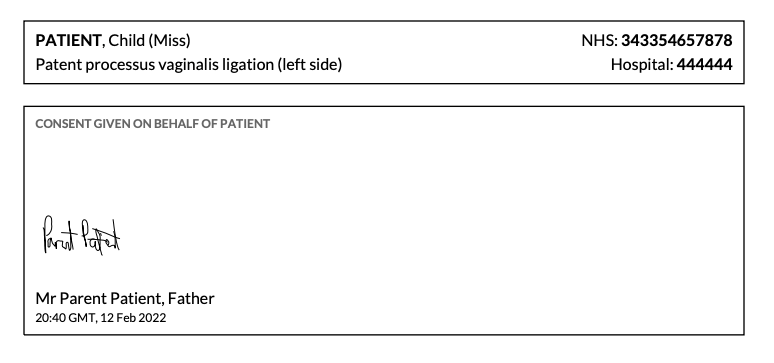
See a full example of a Consent Form 2 PDF.
Consent form 4
A consent form 4 has some different elements compared to the other types, and different information will need to be recorded depending on the circumstances.
Full details and a demonstration video of the consent form 4 workflow is available here.
Capacity assessment - Before a consent form 4 / best interest decision is completed, a capacity assessment must demonstrate that the patient does not have the capacity to make this decision via four standard capacity questions.
Best interest decision - This is a set of questions to ensure that the decision being made is in the patient’s best interest, is not against any advance decision, and who is legally required to make the decision - for example, if there is a Lasting Power of Attorney (LPA) appointed, or, in the absence of any other form of authority, that the decision should be made by the responsible clinician.
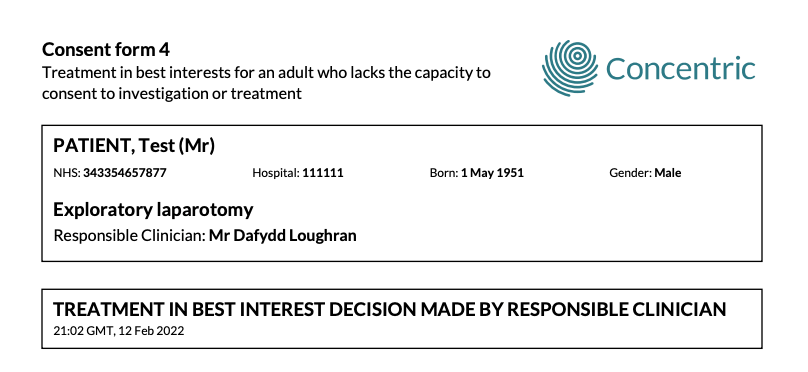
Capacity assessment example
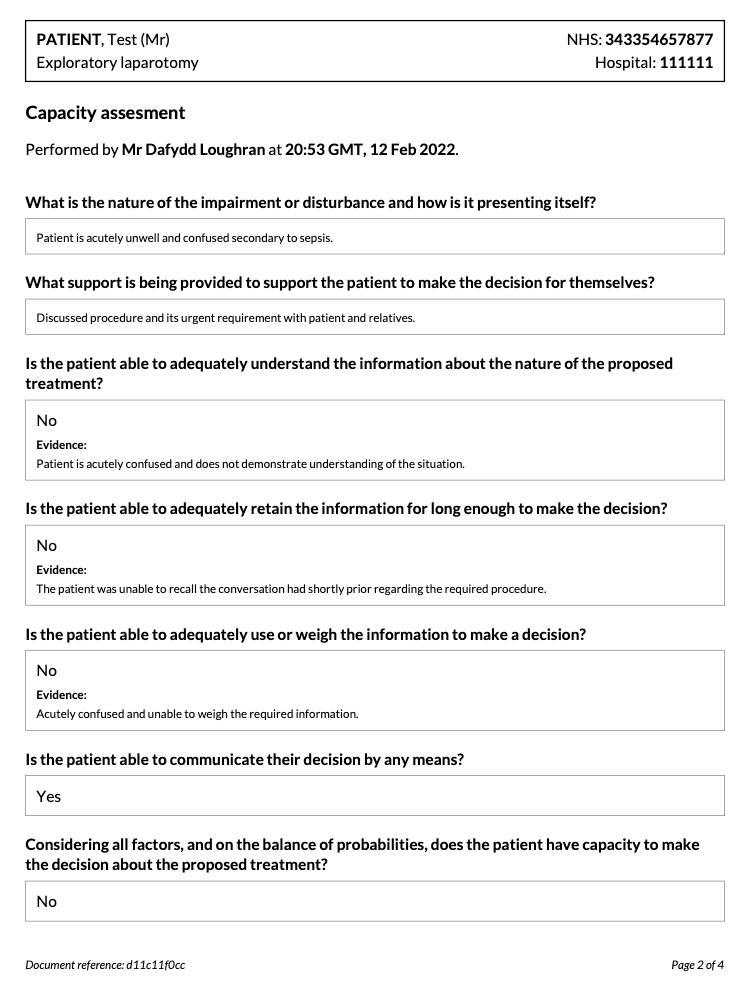
Best interest decision examples
Where there is no other form of authority (i.e. no LPA or personal welfare duty):
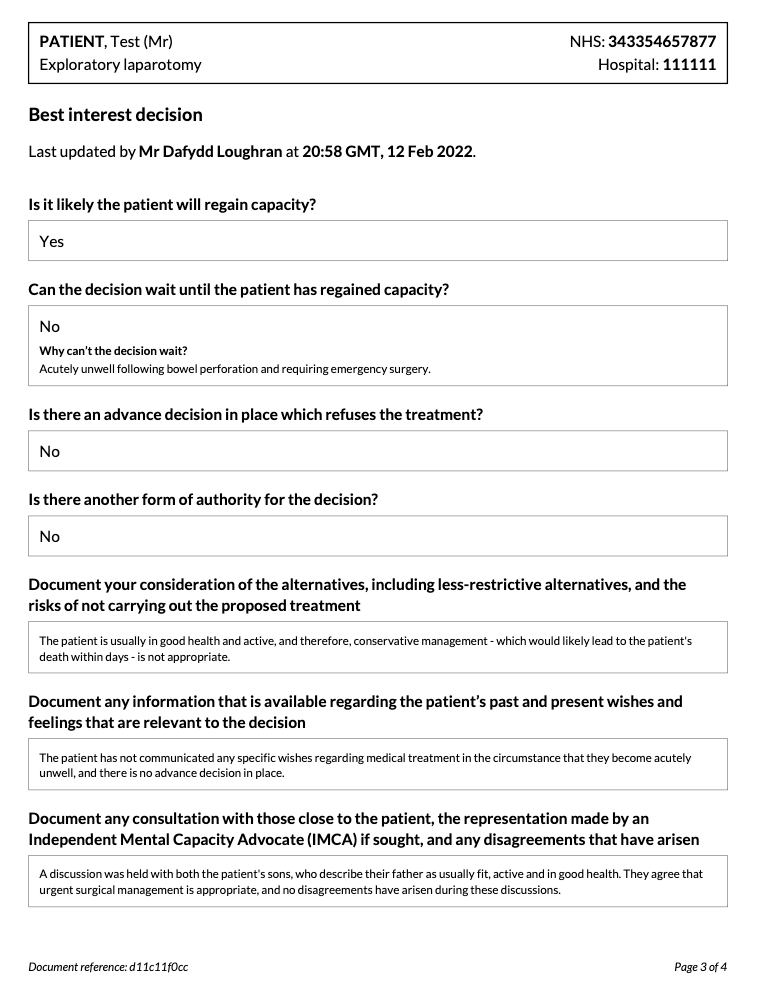
Where there is a Lasting Power of Attorney, the final three questions above are replaced with details of the LPA:
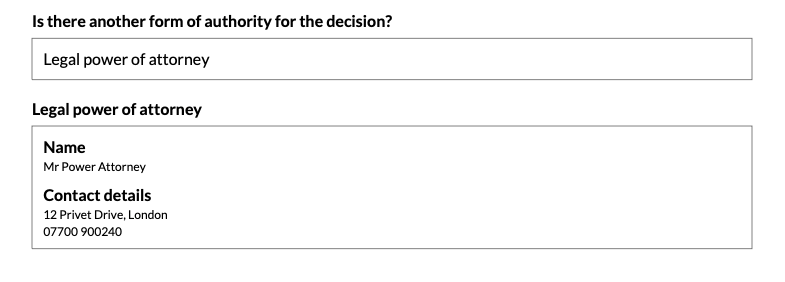
Depending on which of the above situations applies, the individual completing the summary and consent/treatment in best interest decision will be the responsible clinician (usually the consultant responsible for the patient’s care) or the LPA / personal welfare duty.
Note that the capacity assessment and best interest decision documentation can be completed by a different clinician to the responsible clinician completing the summary and confirmation of treatment in best interests.
Consent statements and signature in an example where there is a lasting power of attorney appointed:
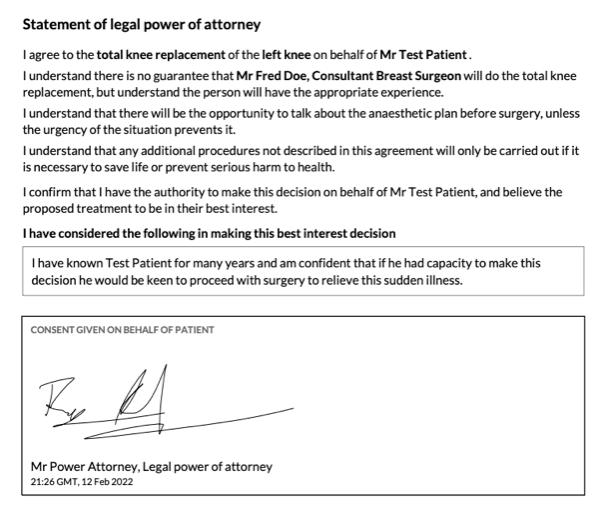
See a full example of a consent form 4 PDF.